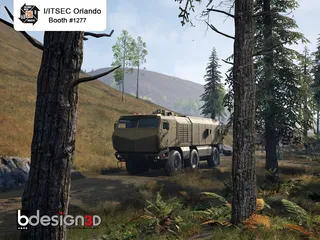International Medics Tackle Tactical Combat Casualty Care
Contact Our Team
For more information about how Halldale can add value to your marketing and promotional campaigns or to discuss event exhibitor and sponsorship opportunities, contact our team to find out more
The Americas -
holly.foster@halldale.com
Rest of World -
jeremy@halldale.com

Air Force students provide cover while pulling a ‘wounded’ training mannequin out of simulated line-of-fire during the Tactical Combat Casualty Care course at Fairchild Air Force Base, Washington. All image credits: U.S. Air Force photo by Senior Airman Ryan Lackey.
Nearly two hundred medics from the U.S. Air Force and Army, as well as partner countries Australia, New Zealand and Canada, underwent Tactical Combat Casualty Care (TCCC) training recently during Exercise Mobility Guardian 2019 at Fairchild Air Force Base, Washington. Students included non-medics, medical providers and TCCC instructor trainees.
TCCC has become the new standard of medical trainingproficiency for military personnel, which is set to replace Self Aid Buddy Caretraining, to prepare them for potential combat situations in an ongoing effortto heighten medical readiness. The TCCC training is an intensive two-dayimmersion on stabilizing trauma victims from common battlefield injuries suchas hemorrhage, airway obstruction and shock.
Instructor trainees, including two from the 92nd Medical Group, underwent certification evaluations to grant them the ability to continue TCCC training of personnel at their home locations.
"It’s been proven that the likelihood of survival intactical or combat situations improves with more people having this training,”said Air Force Master Sgt. Brooke McKee, Air Mobility Command aircrewaeromedical evacuation and TCCC instructor. “This is an advanced first-aidtraining that comes in three phases: Care Under-Fire, Tactical Field Care andTactical Evacuation.”
Care Under-Fire is responding to somebody being shot orotherwise wounded and checking their condition. Tactical Field Care is theapplication of stabilizing medical care to stop bleeding or keep a patientbreathing. Lastly, the Tactical Evacuation is getting wounded patients to asafer area or hospital where advanced treatment can be applied, McKee said.
TCCC training has four levels of qualification: All ServiceMembers (Tier 1), Combat Lifesaver (Tier 2), Combat Medic (Tier 3) and CombatParamedic (Tier 4). Air Force Surgeon General Lt. Gen. Dorothy Hogg recentlymandated that qualified medical providers complete TCCC Emergency MedicalTechnician training (Tier 4) within 18 months of its initial release this year,with training (Tiers 1-3) for all other personnel.
"There are two courses, the combatant course and themedical provider course,” Mckee said. “The medical provider course is advancedtraining for medics, nurses, doctors … anybody that holds a medical license.The combatant course is for everybody else; it’s geared toward basicstabilizing techniques to treat the wounded, or even yourself, if necessaryuntil a medic arrives.”
Classroom training is a significant part of the course, butthe final hurdle is stress-testing students under imitation battlefieldconditions, complete with wounded and simulated weapons fire by enemycombatants.
"It’s important that we develop our medics and troops to do this for real and not just fill them with classroom knowledge,” said Air Force Maj. Brian Bolton, TCCC training lead. “We need people field-ready. This training is crucial and working with other services and allies like this helps make connections that will speed integration during joint field operations.”
Source: US Air Force


